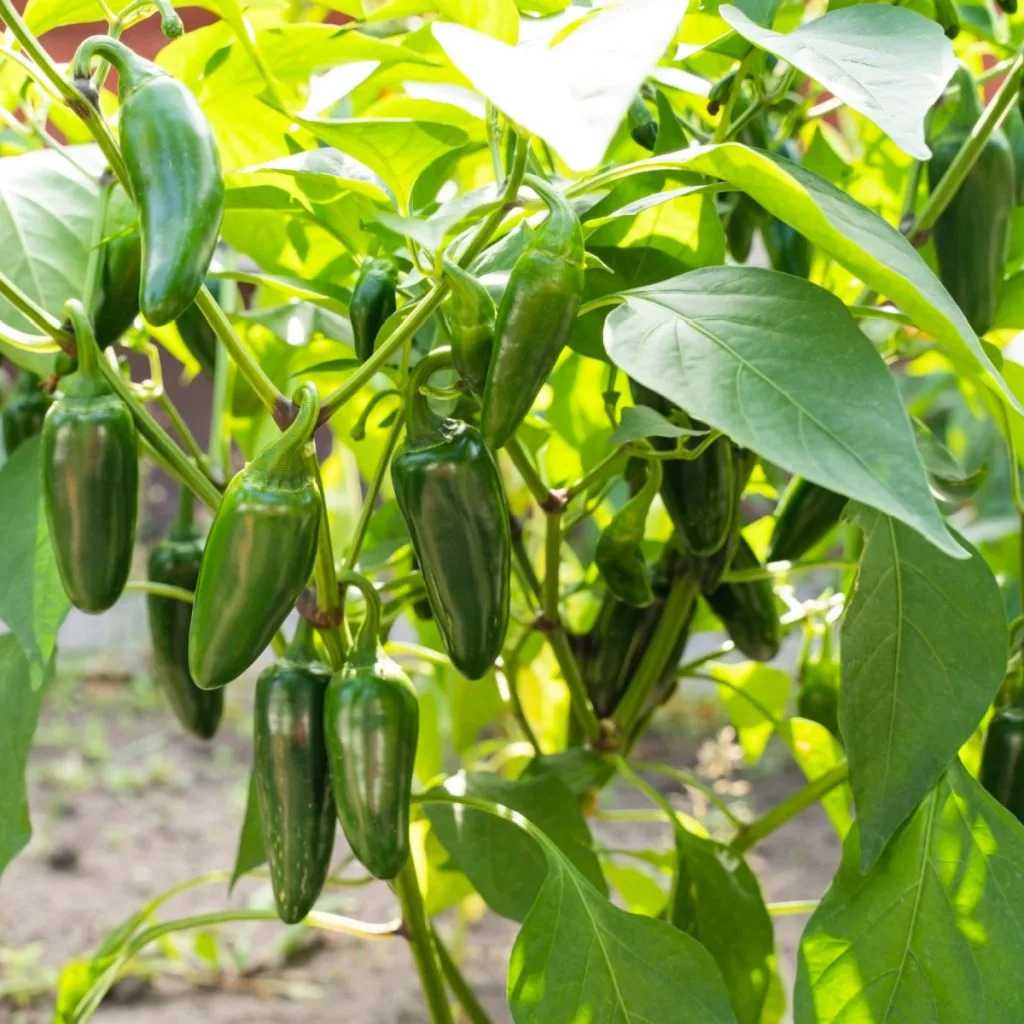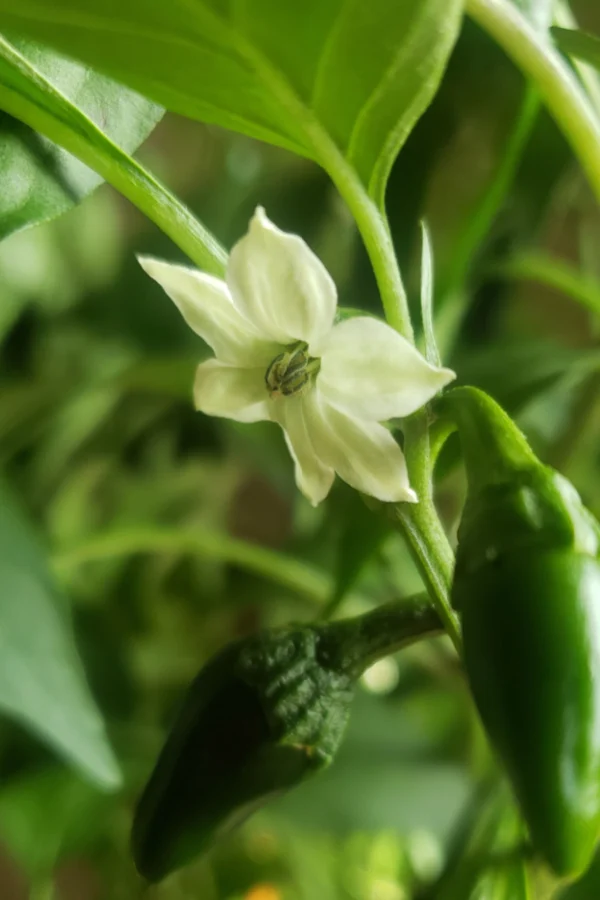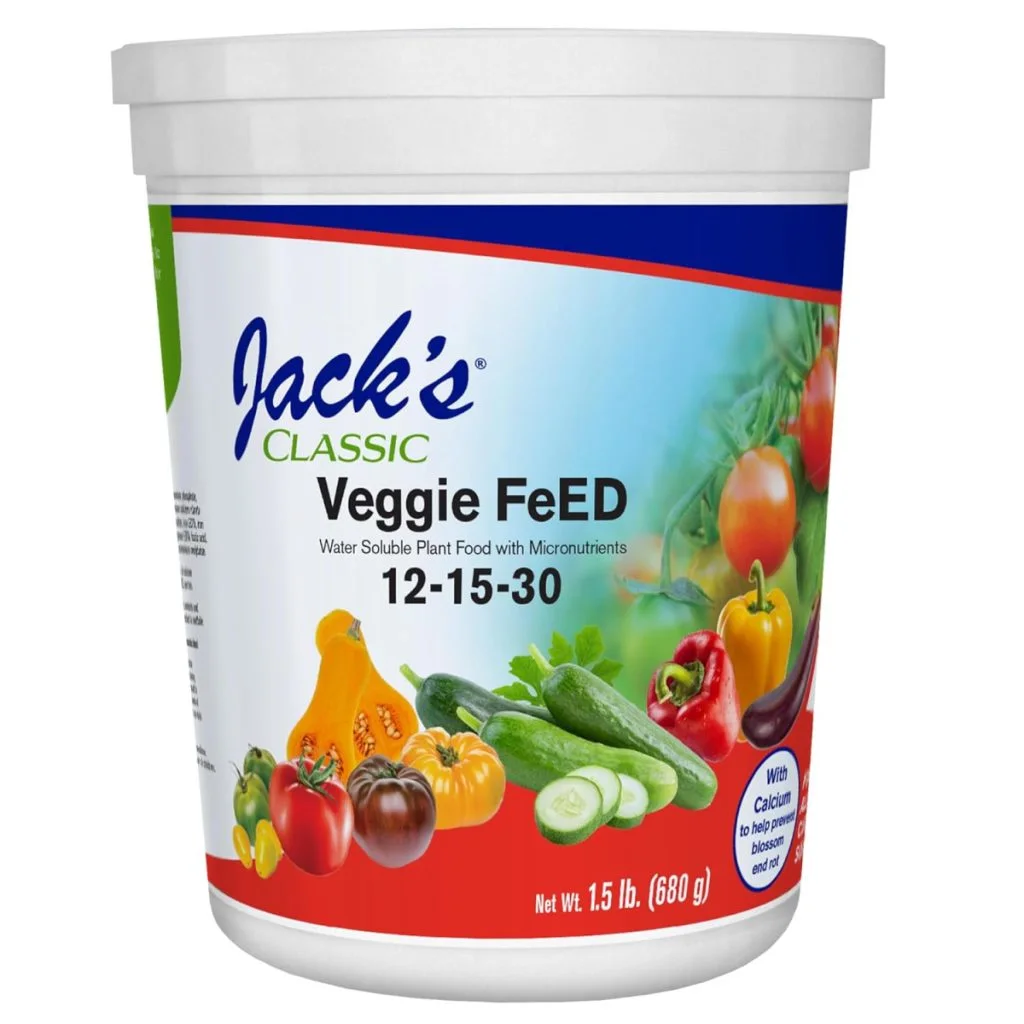One of the best ways to keep your jalapeno pepper plants productive right up until fall is to fertilize them on a regular schedule not just when you first plant them – but all summer long. But just as important is knowing what and how to feed them for a huge harvest!
Jalapeno pepper plants are a summer garden favorite. Especially for those who love a little spice in their life! They are also one of the most productive pepper varieties you can grow – that is if you keep them healthy and fed.
While many gardeners give their pepper plants fertilizer early in the season, they often stop feeding once the plants begin to flower and set fruit. Unfortunately, that’s exactly the time when jalapeno plants need nutrients the most.

How To Fertilize Jalapeno Pepper Plants In The Summer
Why Fertilizing Is Important During The Warm Months
The warm months are when jalapenos put the most energy into flowering, forming fruit, and ripening. Without enough nutrients during this period, plants slow down. Not only will production drop – but so will the size of your peppers.
In the early part of the growing season, jalapeno plants focus on developing strong stems, healthy leaves, and a deep root system. Gardeners often give a starter fertilizer or a slow-release feed to help the plant grow strong and full. But once summer heat arrives and peppers begin to appear, the plant’s energy demands shift.
Instead of using nutrients mainly for leaf growth, jalapenos now need nutrients to produce flowers, set fruit, and develop peppers. Each pepper on the plant requires energy to grow and ripen. As you pick ripe jalapenos, the plant will produce more flowers to replace them. That is, if it has the nutrition to do so. Without ongoing feeding, the plant will run out of the resources it needs to keep producing.
This is why summer fertilizing is so critical. During this stage, the right kind of fertilizer can help the plant focus its efforts on flowering and fruit production, rather than wasting energy on excessive leaf growth.

How To Fertilize Jalapeno Pepper Plants With The Right Nutrients
When jalapeno plants are in full production, they need a fertilizer that is higher in phosphorous (P) and potassium (K) than nitrogen (N). Fertilizers list these nutrients in a three-number ratio. The first number is nitrogen, the second is phosphorous, and the third is potassium.
Nitrogen is important for early plant growth and strong green foliage. But too much nitrogen in summer can actually hurt production. If you give your jalapenos a fertilizer high in nitrogen, the plant will put more effort into growing leaves and stems instead of flowers and fruit. This results in big, leafy plants with fewer peppers.
Phosphorus helps plants create strong root systems and, more importantly during summer, it encourages flower development. Since each pepper starts as a flower, more blooms mean more jalapenos.
Potassium supports overall plant health and improves fruit quality. It helps peppers develop thicker walls, better flavor, and longer storage life. It also strengthens the plant’s ability to handle summer heat and resist disease.
A good summer fertilizer for jalapenos should have lower nitrogen and higher phosphorus and potassium. Many liquid fertilizers for flowering vegetables are formulated this way and work perfectly for summer feeding. Affiliate Link: Jack’s Classic 12-15-30 Veggie Feed Water-Soluble Fertilizer.
Why Liquid Fertilizer Works Best in Summer
In the heat of summer, plants grow quickly and need a steady supply of nutrients. While granular fertilizers are great for long-term feeding earlier in the season, a liquid fertilizer is best for feeding jalapeno pepper plants in the summer.
Liquid fertilizers are absorbed by the plant more quickly because they are in a form that roots can take in right away. This means the nutrients get to the plant faster. And this helps to fuel flower and fruit production almost immediately. In addition, liquid feeding allows you to control the strength and timing of applications more precisely, which is especially helpful in hot weather.
Another benefit is that you can apply liquid fertilizer directly to the soil around the roots, where it is needed most. You can also use it as a foliar spray, applying it to the leaves where nutrients can be absorbed through the foliage as well.
Feed A Lower Dose – But More Often
One of the most important tips for fertilizing jalapenos in summer is to avoid giving them a full-strength dose all at once. Instead, feed at a quarter to half of the manufacturer’s recommended strength and apply it more frequently.
For example, if the fertilizer label suggests one tablespoon per gallon of water every two weeks, try using only half a tablespoon per gallon and applying it once or twice a week. This steady feeding approach provides the plant with a consistent supply of nutrients. It’s much better than overwhelming it with a large dose all at once.

Large doses of fertilizer can cause nutrient imbalances or stress the plant, especially in hot weather. Over-fertilizing can also lead to root burn, where the roots are damaged by too many concentrated nutrients in the soil. By feeding more often at a lower rate, the plant gets exactly what it needs without risk of damage.
How to Apply Liquid Fertilizer to Jalapeno Plants
Mix the fertilizer at quarter or half strength according to your plan, and pour it slowly around the base of each plant, focusing on the area just beyond the main stem. This is where the feeder roots are located and where they can take in the nutrients most effectively.
If you are using a hose-end sprayer or watering can, apply the liquid so that the soil gets evenly soaked but not waterlogged. In addition to root feeding, you can also mist the leaves with the diluted fertilizer to provide a quick nutrient boost through foliar absorption.
Be sure to do foliar feeding early in the morning or in the evening to avoid leaf burn from the sun.
A Good Summer Fertilizing Schedule
Consistency is the key to keeping jalapeno plants productive in the summer. Once you start your feeding routine, keep it going until late in the season when the plants naturally slow down production.

A good schedule for summer is to feed with diluted liquid fertilizer every 7 to 10 days. If your plants are in containers, you may need to fertilize even more often because nutrients wash out of the soil more quickly when watering. In very hot weather, container plants might benefit from a light feeding every 4 to 5 days.
Always watch the plants for signs that they are getting the right balance of nutrients. Healthy jalapeno plants should have deep green leaves and steady flower production. In addition, they should have new peppers forming regularly. If leaves turn pale or the plant stops producing, it may need more frequent feeding. If it starts producing too many leaves and fewer peppers, you may need to lower the nitrogen level.
Harvesting To Keep Plants Producing
Last but not least, keep harvesting! Regular harvesting is an often-overlooked part of keeping jalapeno plants productive. Every time you pick ripe peppers, the plant responds by producing more flowers and setting new fruit.
If peppers are left on the plant too long, it signals to the plant that it can slow down production. Picking jalapenos while they are still green and firm encourages the plant to keep producing, and fertilizing regularly gives it the energy to do so.
You can always allow a few peppers to ripen to red for added sweetness and color, but be sure to keep harvesting the others to maintain peak production. Allowing a few to remain also helps you save seeds better. See our article: How To Save Seeds From Pepper Plants.
Here is taking the time to fertilize your jalapeno pepper plants for big production this year!
This Is My Garden
Follow Our Facebook Page For Great Gardening Tips And Advice! This Is My Garden Facebook Page
This Is My Garden is a garden website created by gardeners, for gardeners. Jim and Mary Competti have been writing gardening, DIY and recipe articles and books and speaking for over 15 years from their 46 acre Ohio farm. They publish three articles every week, 52 weeks a year. Sign up today to follow via email, or follow along!

